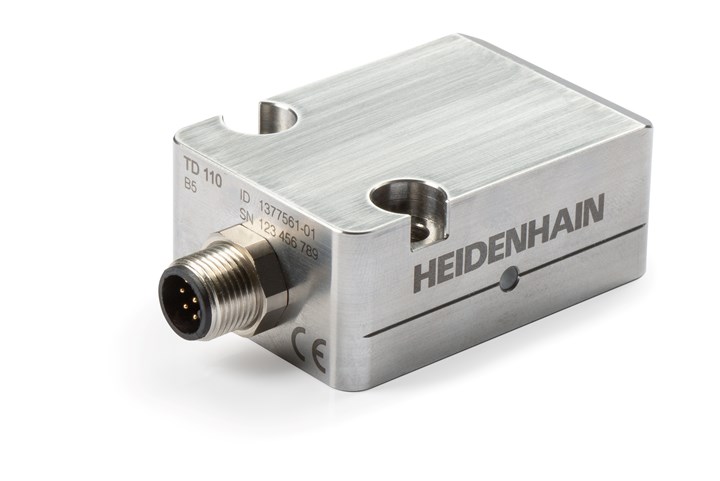Machine Tool Breakage Detector Enhances Mold Manufacturing Reliability
Heidenhain’s new TD 110 is a fast, contact-free, in-process gage that can quickly inspect drill bits and end mills, even while spinning at their operational speed.
Heidenhain Corp. spotlights the new TD 110 tool breakage detector, specially designed for quickly sensing tool breakage during use within a machine tool. Providing contact-free inspection of drill bits and end mills, it can determine whether a tool is broken off by more than 2 mm as it passes within a machine tool, yielding significant time and money savings.
The TD 110 tool breakage sensor can be placed in the work envelope so that it is fast and easy to reach during the tool change, according to the company. The inductive sensor detects tools as they pass by while spinning at their operational speed. The TD 100’s rapid scanning technology ensures even very small tools made of HSS steel and carbide are detected.
Once detected, the breakage sensor can either generate a floating or an HTL switching signal and the machine control evaluates it via standard instruction sets. These signals/outputs can be used to connect to a Heidenhain TNC control or a PLC, or to any other IOs of nearly every CNC control manufacturer. In addition, an LED signals whether a tool has been flagged.
TD 100’s overall benefits include a maintenance-free sensor for reducing non-productive time for breakage inspection; the toleration of cooling lubricant and lightly contaminated tools; and a universal retrofit, the result of standard interfaces for tool touch probes.
Related Content
-
Solving Mold Alignment Problems with the Right Alignment Lock
Correct alignment lock selection can reduce maintenance costs and molding downtime, as well as increase part quality over the mold’s entire life.
-
How to Eliminate Chatter
Here are techniques commonly used to combat chatter and guidelines to establish a foundation for optimizing the moldmaking process.
-
Fundamentals of Designing the Optimal Cooling System
The right mold components can help improve mold cooling and thereby produce higher-quality parts.













